Use this pack of resources and activities to carefully select the vocabulary to teach and focus on the most tricky words
Help every learner master the language of structure and bonding and access understanding.
-
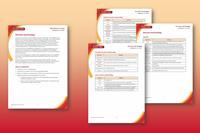
-
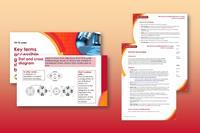
Accessible glossary
Expand on the key terms list with images, examples, learner-friendly definitions and more
-
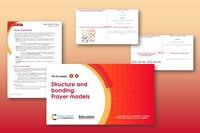
Frayer models
Explore and develop understanding of selected key terms using this framework
-
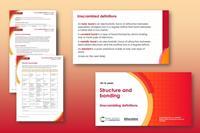
View and download more Key terms support packs
Introduction
This key terms support pack aims to help you be clear about the vocabulary your learners will need to access this topic at this level and provide the tools you need to help every learner do so.
The key terms resource is a list of carefully selected vocabulary, with definitions, that learners will come across when studying this topic at this stage. You can also find all these key terms and their definitions in the accessible glossary which contains images, pronunciation guides and other information. A smaller group of these same key terms and their definitions are in the Frayer models and the unscrambling definitions resources.
All resources are provided in editable formats so you can adapt to your learners and exam board requirements.
How to use the key terms list
The list of key terms and definitions is suitable for 14–16-year-old learners but is not specific to any exam board or qualification. You can edit the definitions to match your own exam board requirements.
The key terms are grouped by subtopic and are in alphabetical order. More guidance is provided in the teacher notes.
Ideas for adaptation
- Include the words in a spelling task.
- Ask learners to research some of the words independently.
- Delete the definitions and ask learners to fill them in as each term is introduced.
- Integrate speaking and listening skills into this activity: model pronunciation. Say the key terms and definitions aloud and ask learners to repeat as a class; voice a correct and an incorrect use of the key term in a sentence and invite learners to guess which is which.
How to use the accessible glossary
The key terms accessible glossary contains images, pronunciation guides and other information to help learners bridge the gap between key terms and definitions.
Each slide is broken down into sections:
- In other words: a more learner-friendly definition.
- Sign it: links to the Scottish Sensory Centre BSL chemistry glossary, hosted by the University of Edinburgh. Learn more about How sign language can help all learners.
- Say it: guides learners on how to pronounce each key term.
- Break it down: where useful, this segment breaks key terms down into composite word parts to reveal more about their meaning.
- Similar words: on many slides, this segment lists words that have the same or very similar meanings.
- Example: an example of the word/the word in a context that learners are likely to be more familiar with.
- Don’t confuse with: lists relevant common misconceptions for learners to be aware of.
- Other meanings: on some slides, this segment lists other contexts in which learners might come across the word, for example in physics or biology.
This is a versatile resource. Here are some ideas for how to use it.
- Print as a booklet and give to colleagues who focus on EAL or SEN. Use with learners ahead of their chemistry lessons to pre-teach vocabulary.
- Insert selected slides into other presentations, to highlight that you’re introducing a new term to learners.
- Use for revision after a lesson which featured the key term.
- Print out a version with only the image and the ‘in other words’ definition and use this as the basis for an activity you create yourself.
- Task learners to break down the key term definitions further, using labelled diagrams.
- Create revision flashcards by printing several slides on one sheet of paper.
Edit the slides to modify the content to best suit your learners, e.g. delete the contents of segments and ask learners to populate them. This encourages learners to draw on their science capital and can facilitate learners sharing prior knowledge among peers before the content is covered in class.
How to use Frayer models
Frayer models are a simple but effective way to develop learners’ understanding of a new piece of vocabulary. You will see what your learners already know and identify any misconceptions they have. The key term is placed in the middle of four quadrants; ask learners to populate the quadrants in turn.
- Explore: link to science capital and find out what learners already understand about the term.
- Break down: look at composite parts of the word to understand its meaning more deeply.
- Explain: introduce the definition. This section is in two parts. First, ask learners to define the term themselves and then ask them to copy the definition from the key terms list.
- Consolidate: get learners to apply their knowledge of the term by answering a question.
Read more about Frayer models and their use in Teaching challenging vocabulary and A model for success.
Tips for adapting Frayer models
These resources are supplied in an unscaffolded and scaffolded format. For some learners, the explore quadrant proves a particular challenge so give them more time, support and explicit instruction to use these models. Don’t worry if it doesn’t work first time.
- Highlight common prefixes, suffixes and translations. This can be helpful for learners.
- Link to similar words to help learners suggest possible meanings.
- In the explain quadrant, include diagrams, examples and non-examples.
- Add a stretch question to the consolidate quadrant to deepen understanding.
How to use unscrambling definitions
Unscrambling definitions is a fun way to test and consolidate learners’ understanding of the key terms and definitions. Instruct learners to piece together the definitions of key terms and then use their understanding of the terms to complete sentences. Answers are given in the teacher notes and are also provided as slides. Like the accompanying Frayer models, unscrambling definitions probe learners’ understanding and target the trickier terms in the key terms list. Read more about unscrambling definitions and their use in Closing the word gap.
Ideas for adaptation
Integrate speaking and listening skills into this activity:
- Print the unscrambling definitions grid and cut around the individual boxes. Ask learners to each take a box and – as a class or group – arrange themselves into the various definitions. When everyone is ready, ask each learner to read out their own part of the definition in turn.
- Ask learners to read out the connection completion slide in full.
- For a quicker adaptation, consider doing a think, pair, share activity where learners discuss and decide on the correct definitions in pairs or small groups.
Provide more support by linking the term in column A to the correct entry in column B and perhaps the entry in column B to the correct entry in column C, for the first few key terms in the grid.
Downloads
Key terms structure and bonding student sheet
Handout | PDF, Size 0.12 mbKey terms structure and bonding teacher notes
Handout | PDF, Size 0.12 mbAccessible glossary structure and bonding student slides
Handout | PDF, Size 2.07 mbAccessible glossary structure and bonding teacher notes
Handout | PDF, Size 0.16 mbFrayer models structure and bonding scaffolded student slides plus answers
Handout | PDF, Size 0.65 mbFrayer models structure and bonding unscaffolded student slides plus answers
Handout | PDF, Size 0.61 mbFrayer models structure and bonding teacher notes
Handout | PDF, Size 0.16 mbUnscrambling definitions structure and bonding student sheet
Handout | PDF, Size 0.12 mbUnscrambling definitions structure and bonding teacher notes
Handout | PDF, Size 0.13 mbUnscrambling definitions structure and bonding slides
Handout | PDF, Size 0.3 mbKey terms structure and bonding student sheet
Editable handout | Word, Size 0.43 mbKey terms structure and bonding teacher notes
Editable handout | Word, Size 0.43 mbAccessible glossary structure and bonding student slides
Editable handout | PowerPoint, Size 3.3 mbAccessible glossary structure and bonding teacher notes
Editable handout | Word, Size 0.43 mbFrayer models structure and bonding scaffolded student slides plus answers
Editable handout | PowerPoint, Size 0.51 mbFrayer models structure and bonding unscaffolded student slides plus answers
Editable handout | PowerPoint, Size 0.44 mbFrayer models structure and bonding teacher notes
Editable handout | Word, Size 0.43 mbUnscrambling definitions structure and bonding student sheet
Editable handout | Word, Size 0.43 mbUnscrambling definitions structure and bonding teacher notes
Editable handout | Word, Size 0.43 mbUnscrambling definitions structure and bonding slides
Editable handout | PowerPoint, Size 0.2 mb
Additional information
The key terms list, Frayer models resource and unscrambling definitions resource were authored by Rachel Burton. The key terms accessible glossary was authored by Nathan Russell.





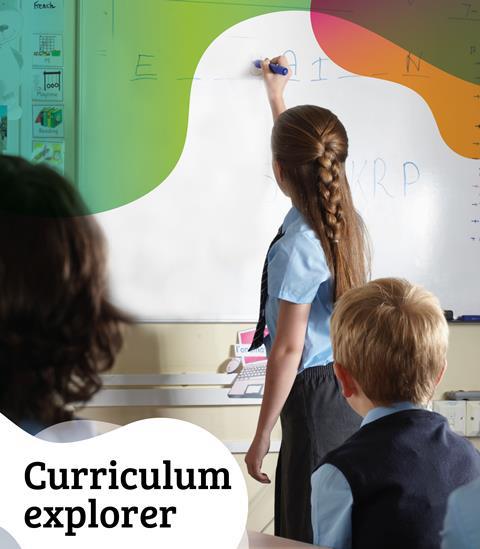









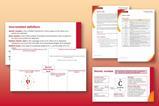






No comments yet